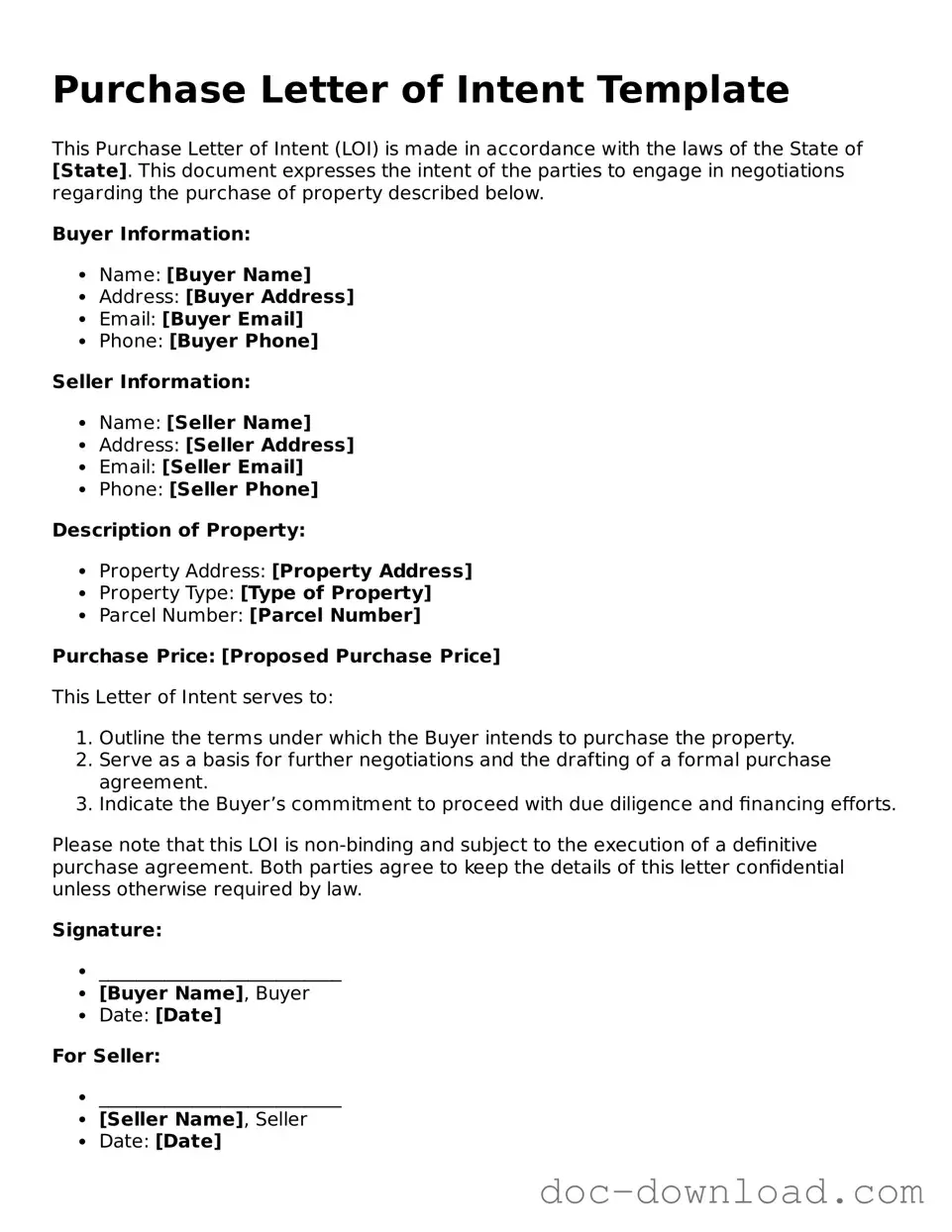The Purchase Agreement is similar to the Purchase Letter of Intent in that both documents outline the terms of a potential transaction. A Purchase Agreement is a more formal and detailed document that includes specific terms regarding the sale, such as the purchase price, payment terms, and any contingencies. While the Purchase Letter of Intent expresses a preliminary interest and outlines basic terms, the Purchase Agreement solidifies the commitment of both parties once negotiations are complete.
The Memorandum of Understanding (MOU) serves a similar purpose to the Purchase Letter of Intent by indicating the intentions of the parties involved. An MOU typically outlines the framework of an agreement without being legally binding. Like the Purchase Letter of Intent, it expresses a mutual understanding and can serve as a stepping stone toward a more formal contract. However, an MOU may cover broader topics beyond just the purchase terms.
A Term Sheet is another document that shares similarities with the Purchase Letter of Intent. It provides a summary of the key terms and conditions of a deal, often in a bullet-point format. While the Purchase Letter of Intent may focus on the buyer's intent to purchase, the Term Sheet lays out the specific terms that will be included in the final agreement. Both documents are used to ensure that all parties are on the same page before moving forward.
The Non-Binding Agreement can also be compared to the Purchase Letter of Intent. This type of agreement outlines the intentions of the parties but does not create a legal obligation to proceed with the transaction. Like the Purchase Letter of Intent, it allows the parties to express their interest and intentions without committing to a final deal. Both documents are useful for setting the stage for further negotiations.
The Alaska Homeschool Letter of Intent form is essential for parents or guardians preparing to homeschool their children. This document not only serves to fulfill the state's requirements but also acts as a formal declaration of a family's commitment to this educational path. Seamlessly integrating this step into the decision-making process helps parents establish a clear foundation for their homeschooling journey, much like the guidelines set out in the Homeschool Intent Letter.
Lastly, the Confidentiality Agreement, or Non-Disclosure Agreement (NDA), shares a connection with the Purchase Letter of Intent in that it often accompanies discussions about a potential purchase. While the Purchase Letter of Intent focuses on the intent to buy, the Confidentiality Agreement ensures that sensitive information shared during negotiations remains protected. Both documents work together to facilitate open and honest discussions between parties considering a transaction.
